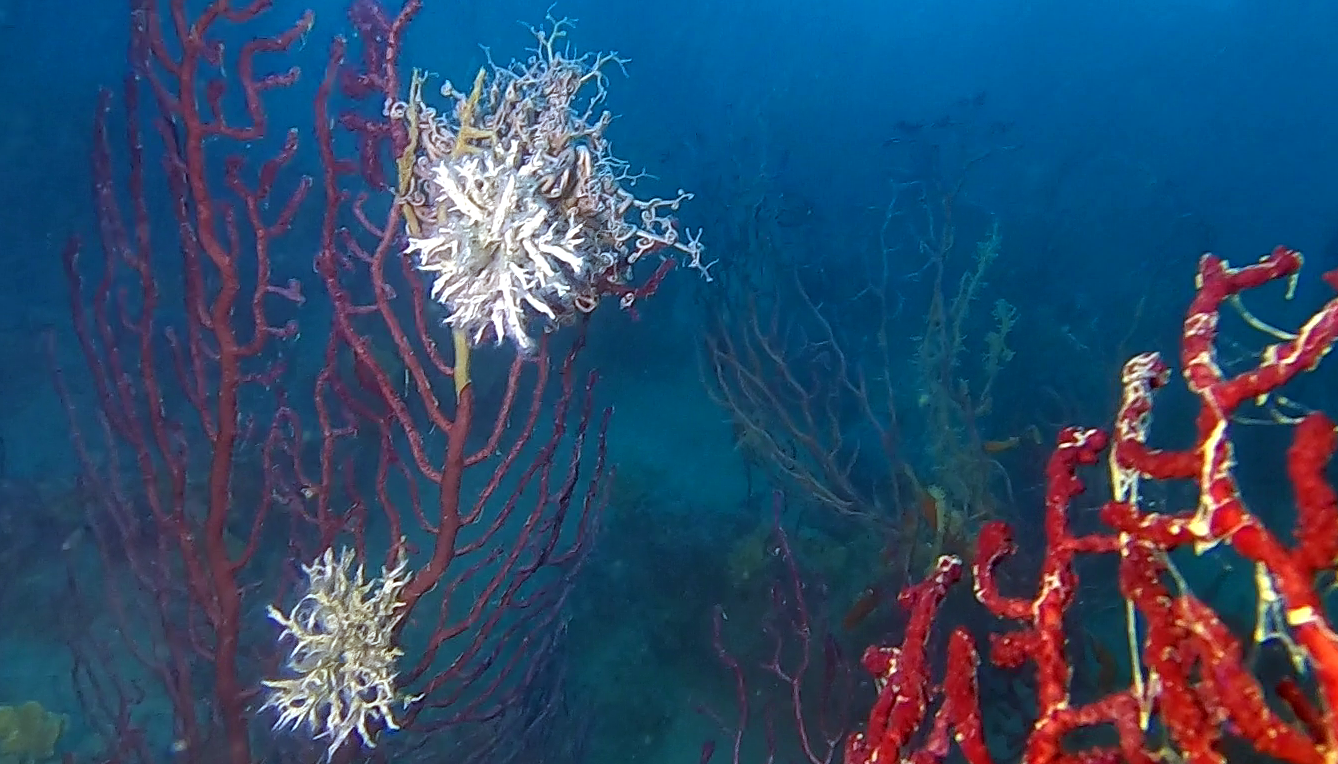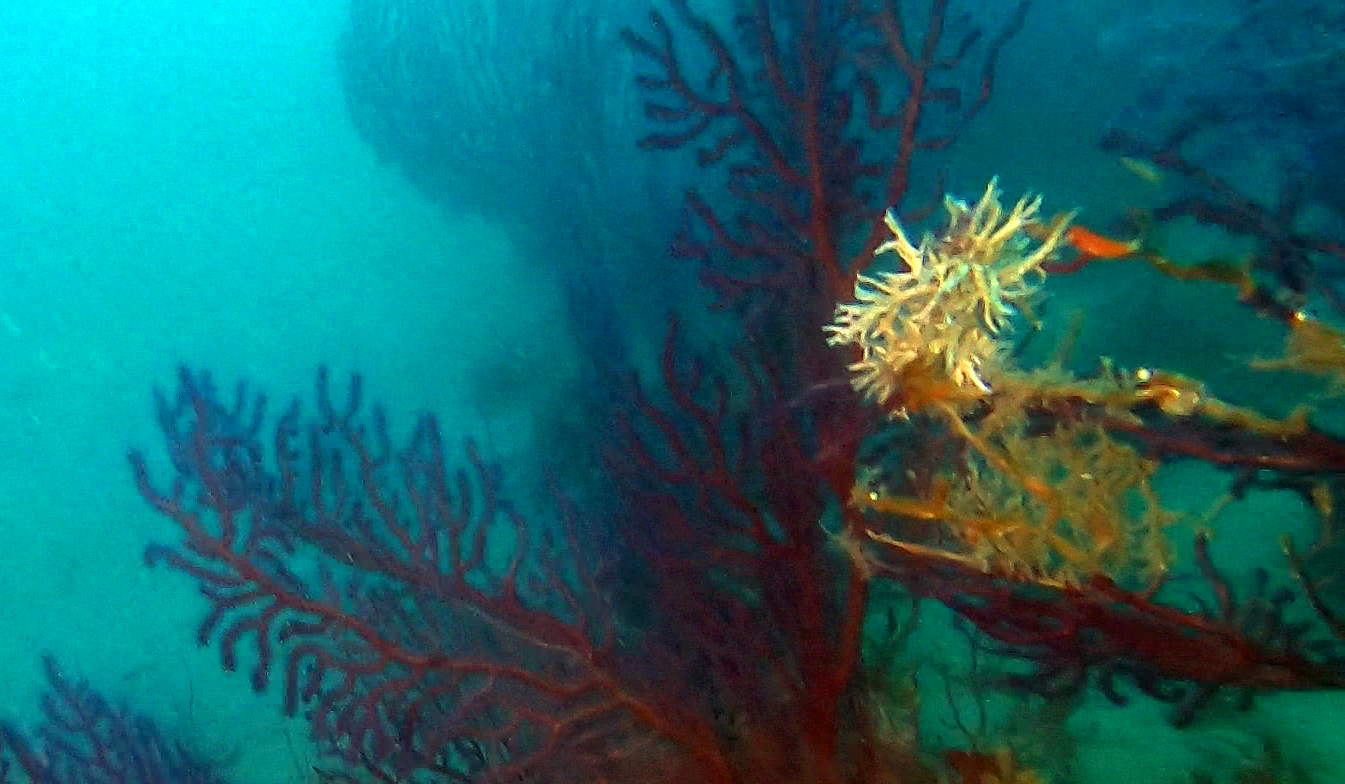Filograna implexa - Salmacina incrustans
Filograna implexa lives throughout the Mediterranean Sea in very small intertwined tubes at a depth that can vary from 10 meters up to over 100 meters and where conditions allow it colonizes the gorgonians, especially the Paramuricea clavata as we show you in the movie, in order to make the most of the nourishment carried by the sea currents.
Filograna implexa (Salmacina incrustans) is a marine species of tubular worm belonging to the class of sedentary Polychaeta of the Serpulidae family.This species is found in the waters of the Mediterranean Sea, the English Channel, the North Sea, the Gulf of Mexico and off the coast of Monzambique, and from South Africa to New Zealand.

The Serpulidae are a family of sessile, tube-building annelid worms in the class Polychaeta. The members of this family differ from other sabellid tube worms in that they have a specialized operculum that blocks the entrance of their tubes when they withdraw into the tubes. In addition, serpulids secrete tubes of calcium carbonate.
Serpulids are the most important biomineralizers among annelids. About 300 species in the family Serpulidae are known, all but one of which live in saline waters. The earliest serpulids are known from the Permian (Wordian to late Permian).

The blood of most species of serpulid and sabellid worms contains the oxygen-binding pigment chlorocruorin. This is used to transport oxygen to the tissues. It has an affinity for carbon monoxide which is 570 times as strong as that of the haemoglobin found in human blood. Empty serpulid shells can sometimes be confused with the shells of a family of marine gastropod mollusk, the Vermetidae or worm snails. The most obvious difference is that serpulid shells are dull inside, whereas the molluscan vermetid shells are shiny inside.
(extract from Wikipedia)
Gallery
Video Gallery
